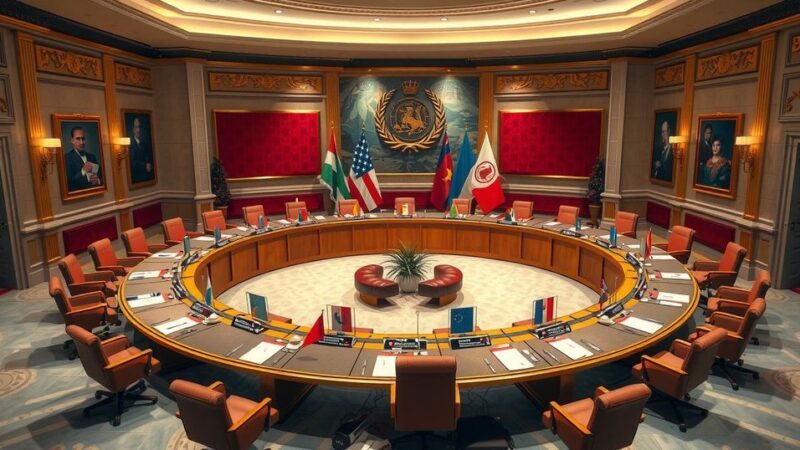Yahya Sinwar, the Hamas leader, has maintained a low profile and directed military actions from hiding, banking on indirect conflicts between Israel and Iran to alleviate pressure on Gaza. His cautious approach complicates negotiations for hostages and reflects a significant divergence from other leaders like Hezbollah’s Nasrallah. Sinwar’s recent reestablishing of communication with representatives in Qatar suggests ongoing strategic maneuvering in response to the conflict’s evolving dynamics.
Hamas leader Yahya Sinwar has adopted a cautious approach by maintaining a low profile, operating from concealment while relaying strategic directives to his commanders. Rather than engaging in direct management of military operations, Sinwar has focused on providing overarching policy guidelines. Current analyses suggest that Sinwar is banking on an armed confrontation between Israel and Iran, anticipating that such an event would alleviate military pressure on Gaza and afford him additional time. Security experts assert that Sinwar has formulated a strategy of hiding for approximately one month, intermittently surfacing to communicate with remaining commanders before retreating once more. This tactic complicates the efforts of Israeli forces and international mediators seeking to negotiate the release of hostages. Officials indicate that Sinwar is relying on potential conflicts involving Israel, Iran, and Hezbollah to inhibit the Israeli military’s capacity to concentrate its forces in Gaza, thereby granting him both time and a chance for survival. In contrast to Hezbollah leader Hassan Nasrallah, who has conducted military campaigns against Israel through a centralized command structure, Sinwar’s methodology diverges significantly. Security sources have highlighted that Sinwar provides only broad strategies and red lines, seldom issuing direct commands. Following the assassination of several senior Hamas members, operational responsibilities have shifted to other leaders, notably his brother, Muhammad Sinwar, who is recognized as more experienced and ruthless. Reports have emerged indicating that Sinwar has resumed communication with Hamas representatives in Qatar. Security officials have previously disclosed that Israeli Defense Forces (IDF) approached Sinwar’s location during operations in Gaza and that he was potentially near hostages. A senior Israeli official confirmed that recent intelligence suggests Sinwar has renewed contact with Hamas figures in Qatar, dispatching new messages. However, it remains uncertain when these communications occurred, with an emphasis that there is no indication Sinwar has softened his position regarding the hostage negotiations. Correspondingly, the Saudi news channel Al Arabiya reported that Sinwar has recently reestablished dialogue with Qatari officials.
Yahya Sinwar has been a prominent figure in Hamas, particularly noted for his leadership during tense confrontations with Israel. His strategic choices often reflect a broader contextual understanding of the geopolitical landscape, particularly regarding Israel’s relationships with regional powers such as Iran and Hezbollah. By remaining in hiding and adopting a fragmented command structure, Sinwar seeks to mitigate threats from Israeli forces while navigating the complexities of hostage situations in Gaza, a pressing issue amid ongoing military hostilities. Understanding the dynamics of the Middle East is essential to grasp the implications of Sinwar’s tactics and their potential impact on Hamas’s operational capabilities and negotiations.
In summary, Yahya Sinwar’s clandestine leadership approach, characterized by intermittent communications and broad directives, is a calculated strategy aimed at navigating the complexities of conflict in Gaza. His reliance on external conflicts, particularly involving Iran, highlights his desire to distract Israeli forces and buy time for Hamas. With the ongoing hostage situation, the efficacy of his methods remains uncertain, while the need for strategic clarity in Hamas’s leadership is increasingly apparent.
Original Source: www.jpost.com






